Today on niche poll tournaments you never thought would exist!
Don't wanna be here? Send us removal request.
Text
Senegalese riflemen on the top picture, Scottish riflemen on the bottom picture.
(Scottish picture colourisation by WWI Colourised Photos)

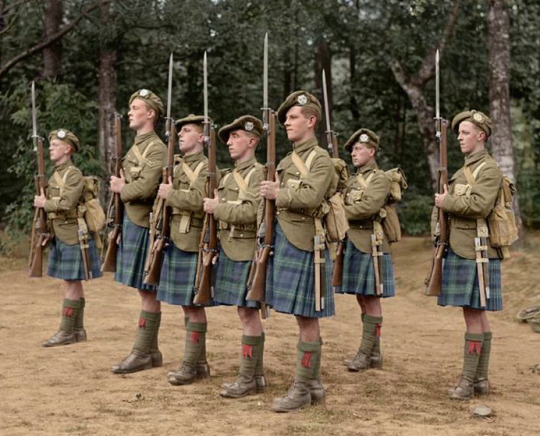
Welcome to the Finals and thank you for your patience!
Your favourites both start by an S: Senegal and Scotland, both parts of a bigger empire, made it to the very end of the tournament. Here they are both showcased in their 1914 uniforms, one a tad more colourful than the other.
A lot has been said about these soldiers in the previous post, but thankfully for us, they were allies during the war, though they perhaps have never met.
Vote away! May the best uniform win!
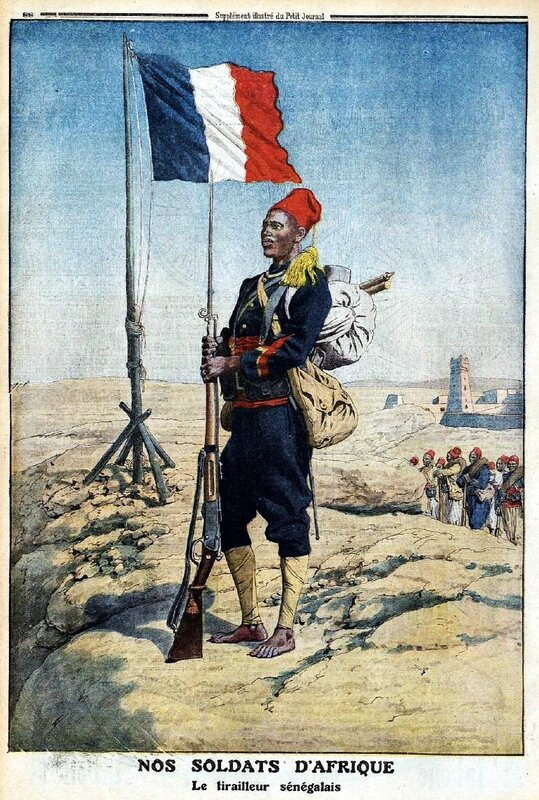

#ww1 uniforms tournament#finals#scotland#senegal#wwi#ww1#senegalese riflemen#tirailleurs sénégalais#british#uniforms
82 notes
·
View notes
Note
are you planning on doing another poll after this one? like diff era uniforms or some other ww1 related poll?
Hello!
If there's enough interest, why not! Feel free to send suggestions in the inbox or on my posts to see if there's a popular choice :)
There were already some requests for cavalry.
12 notes
·
View notes
Note
I know its not ww1, but what are your thoughts about the indian elephant Cavalry uniform.
Hello!
I am not sure what you are referring to, are you thinking about the Camel Corps?

13 notes
·
View notes
Text
Siam on the left, Scotland on the right.

The second and last part of the Half-Finals!
Despite its small size, the Kingdom of Siam made it very far in the tournament! Scotland, on the other hand, is less of a surprise, due to its popularity and the kilt seeming less exotic than other accoutrements seen in the tournament that most people might be less familiar with.
Nonetheless, they share a few common points, namely the khaki uniform closely modeled on the British model, and use of Mills equipment. They might even have met on the same side of the battlefield!


62 notes
·
View notes
Text
Belgium on the left, Senegal on the right.

Welcome to the Half-Finals!
Today's uniforms are drastically opposed in colour, with Belgium's very dark blue (appearing black on pictures) and the Senegalese tirailleurs in red, blue and yellow accents.
Interestingly, this bracket shows the two processes used to get colour photography in the early 1900s. The one on the left, depicting the Belgian soldier, is the cheapest one; the photograph was first taken in black and white and then re-coloured by hand using various media like watercolours or crayons. The one on the right, brand new at the time of the First World War, is a Lumière-patented process called "autochrome" which allows the picture to be taken directly in colour.
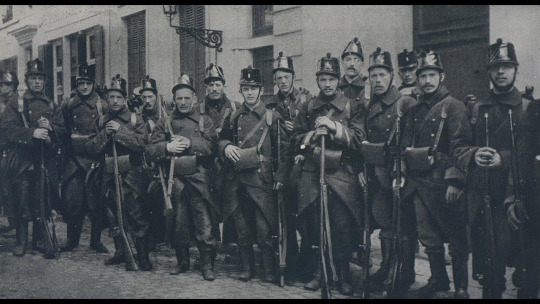
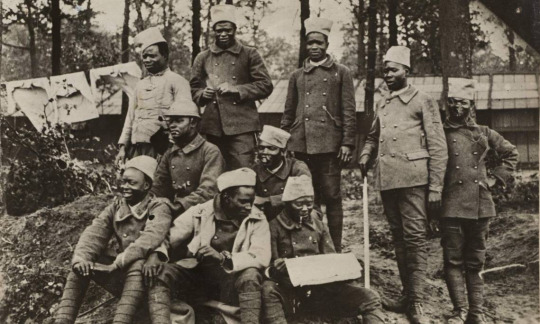
48 notes
·
View notes
Text
France on the left, Scotland on the right.
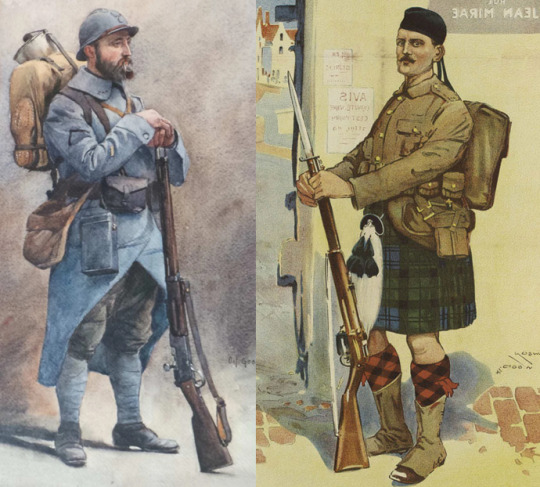
Some of you may not know it, but this duel is a fraternal fight! According to General De Gaulle, Scotland and France were 'the oldest allies in the world'. Though this historical claim could be defied, it's nonetheless true that this alliance is at least one of the oldest ones in History, reuniting Scots and Frenchmen in what they do best: visceral hate of the English. Though the 'Auld Alliance' treaty ended during the 16th century, it still marks relations between the two countries to this very day.

119 notes
·
View notes
Text
Senegal on the left, India on the right.
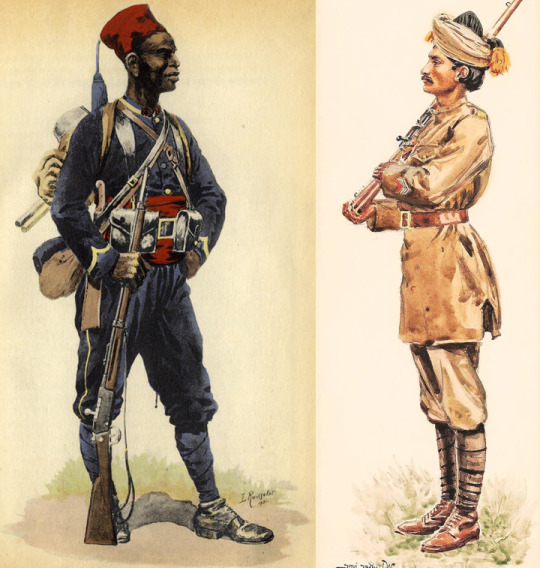
Welcome to the Quarter-Finals!
(Actually, we've been in them since two brackets, but I forgot to switch the titles and now I can't edit them. Whoops)
India faces off with Senegal today. They were both part of a larger colonial Empire, though India was larger in size and had its own army, unlike Senegal which simply despatched its inhabitants to various regiments of the French army. Additionally, Senegalese soldiers were denied French citizenship, whereas Indian soldiers held the status of 'British subject', a sort of half-citizenship which granted them protection abroad but not the full British status.
Moreover, Indian regiments were always led by white officers, while it was mostly but not always the case for Senegalese regiments, which could be led by black officers. This led to a small diplomatic incident with the U.S.A. following the publishing of the 'Secret information concerning black troops,' a notice sent to the French army by an AEF liaison officer asking them to introduce segregation.
32 notes
·
View notes
Text
No poll today! Sorry. We'll be back tomorrow!
7 notes
·
View notes
Text
Belgian Askaris on the left, Siam on the right.
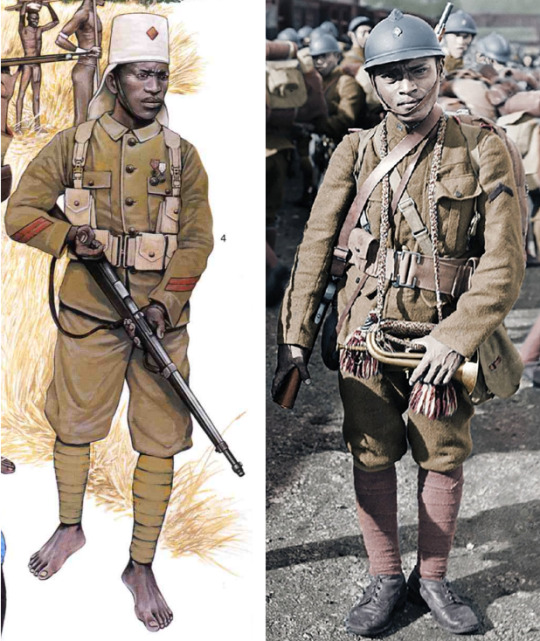
I unfortunately had to reuse those pictures due to scarcity.
On the left, the uniform of the Belgian Askari, in which the puttees are pretty much useless aside from calf support (which they do a great job of, though not their primary function). Askaris were locals who sold their military services to one of the colonising nations for a price they deemed good enough to fight on their behalf. Thus they were found in nearly every army stationed in Africa.
On the right, the uniform of the Siamese Expeditionary Force, the pride of their king and the forerunners of the Thailandese army. Though it had little combat experience, it did however possess a fully trained air force, an impressive feat for the time.
22 notes
·
View notes
Text
Belgium on the left, Romania on the right.
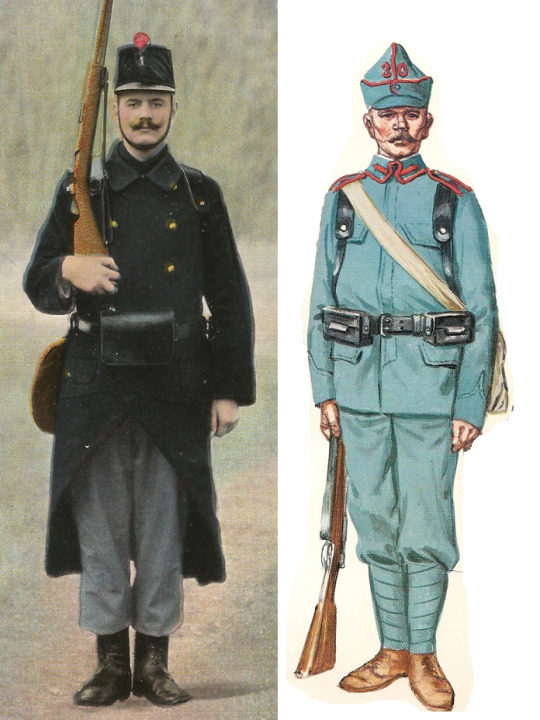
Belgium is one of this contest's favourites! Nicknamed 'the Black Devils' by the Germans (in reality dressed in a dark blue colour), their early war infantry is truly dashing. They were the only troops in Belgium, and yet the Germans, claiming to fight back against partisans (franc-tireurs) killed between 5,500 and 6,500 civilians in a mass war crime dubbed 'the Rape of Belgium', motivating other allies to come to the country's aid.
Following my followers' liking for blue, Romania is back! Despite being occupied by Austria-Hungary until 1918, they still managed to double their nation's size from the one of 1914, a feat achieved to collective effort from the Entente.

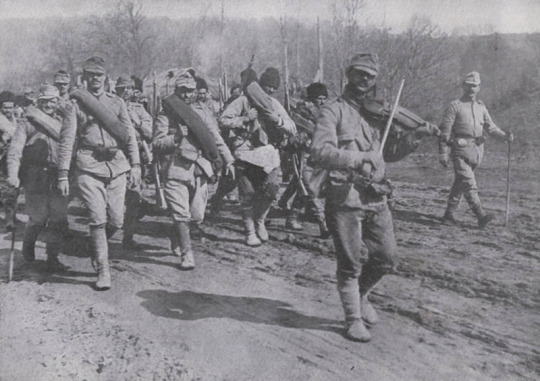
30 notes
·
View notes
Text
Scotland on the left, Algeria on the right.

A promising bracket!
This Scottish soldier stands in a street of Belgium in a 1914 uniform. He wears a dress sporran and his kilt, which would have normally been covered by a khaki apron as per the Scottish soldier posted in the last bracket. He is part of the 'Black Watch', the Royal Highlanders.
The Algerian rifleman on the right is also of the 1914 variety, wearing the cover on his normally blue trousers. He is carrying a Lebel rifle and the red fez characteristic of those troops. A crushing majority of them did not have French citizenship.

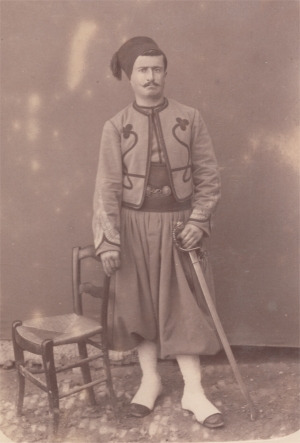
40 notes
·
View notes
Text
India on the left, New Zealand on the right. That might just be my best attempt at composing a bracket illustration yet.

Welcome back to India! It faces off another British possession today. This soldier was drawn from the 1919 contingent of peace sent to England, and thus represents the late war Indian soldier as seen in the last poll, complete with Kurta tunic and SMLE Mk III rifle. The chevrons on his sleeve seem to indicate wounds and/or seniority at the front.
New Zealand is back in the match. Equipped, too, with a SMLE Mk III rifle, the "Lemon Squeezer" hat is this soldier's most recogniseable feature. However, it was not unique to New-Zealanders and also worn by their Australian cousins. Watch out below for a beautiful photograph of a Māori soldier.


29 notes
·
View notes
Text
United Kingdom on the left, France on the right.
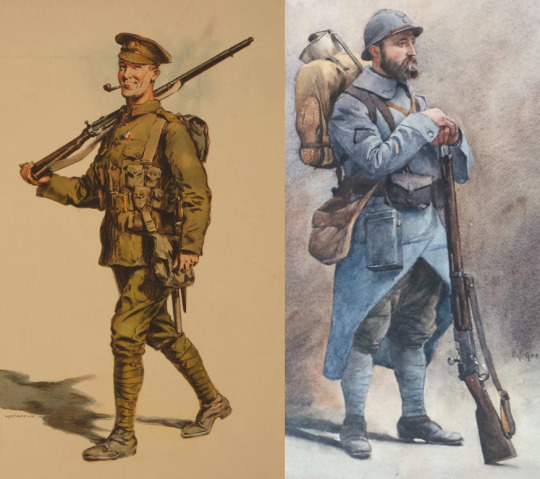
A potentially controversial bracket, the British face off against the French!
This Tommy of the British Expeditionary Force is the dream of propagandists, smiling and confident on his way to France, the perfect imagery of the English during the First World War. He wears the classic M1908 webbing and carries a SMLE Mk III rifle on his shoulder.
The fixed picture of the French army is a later one, the Poilu of the battle of Verdun. Conscripted rather than a volunteer like the BEF soldier, he sports the same pipe but a more serious face, along with his cumbersome 'as de carreau' backpack. He wears the iconic Poiret greatcoat (designed by the famous haute couture tailor Paul Poiret) and carries a M1886 Lebel rifle.


55 notes
·
View notes
Text
Harlem Hellfighters on the left, Senegalese riflemen on the right.

I had to keep the early war uniform for the Senegalese or else their uniforms would be too similar! Amusing fact. See additional photos for late war uniform.
The Harlem Hellfighters are coming back stronger than ever following their large sweep on Germany! This reenactor wearing original WWI equipment shows us the mix of American uniform and French equipment that the Hellfighters wore, with their Adrian helmet, French accoutrements and the M1907/15 Berthier rifle.
Our Senegalese rifleman, from a genuine period autochrome (period photograph taken in colour, an expensive process) lacks his equipment but he would've had worn the same one as our Hellfighter, only dyed black for early war. He wears the coloured sash common to most colonial troops and seems to be a Corporal judging by his rank.

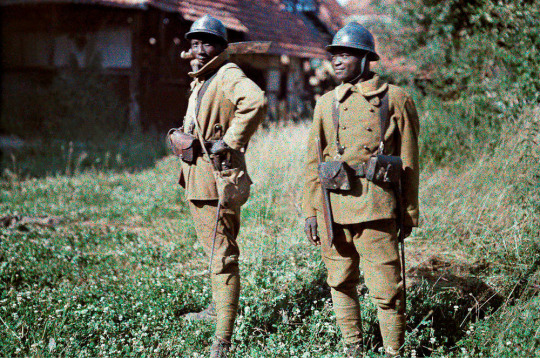
47 notes
·
View notes
Text
It’s an all-Belgian victory yesterday with the victories of Belgium and the Belgian Askaris!
Today’s face-offs: Romania v. Montenegro and Siam v. Australia.
Tomorrow will be the hard-to-choose Senegalese riflemen vs Harlem Hellfighters and France vs UK! Please be civil about it lest you wish to end up dropped in a ditch in the middle of No Man’s Land.
As a matter of information, the two next days are covered, but there might be a gap in polls between the 6th of April and the 8th of April due to me touching grass during this week. Please be patient for my return if I do not manage to make the polls in time. Cheerio!
The tournament poster has been updated. To your votes!
10 notes
·
View notes
Text
Romania on the left, Montenegro on the right.

And let's continue with the Balkan theme for this tournament, two allies facing off!
Our Romanian soldier wears the same equipment as his Montenegrin rival, only dyed black. He has a capela field cap, the Other Ranks' model of double-breasted greatcoat and (very) high ankle boots worn with puttees (perhaps 'incorrectly' so!). He is armed with the M1893 Mannlicher rifle.
Our Montenegrin soldier (technically a section commander, but wearing an other ranks' uniform) wears opanci shoes, like his Serbian cousin. His tunic is the M1910 model, worn with a khaki sash, no insignia and Russian equipment. He wears the Silver Medal for Bravery and carries a Russian M1891 Mosin-Nagant 'Moskovoska' rifle.
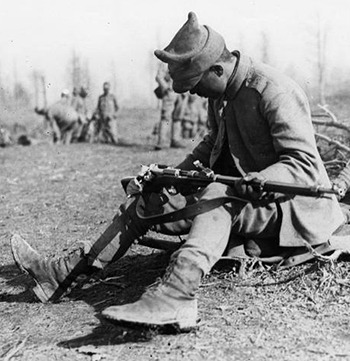

Source: Osprey Publishing.
21 notes
·
View notes
Text
Siam on the left, Australia on the right.
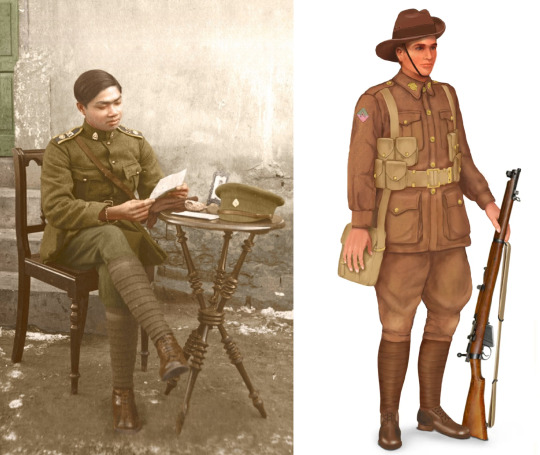
Say welcome back to Siam! The unfortunate lack of data prevents me from commenting on the uniform in detail, but this officer (an exception due to the lack of coloured pictures of Siamese infantry) wears a khaki uniform with neatly wound puttees. His collar badges seem to depict the Great Crown of Victory, a royal emblem used on the war flag of Siam created by King Vajiravudh for his troops departing to the front. Below the crown is his personal emblem.
Australia are back in the competition! I'd already mentioned that their leather equipment was sometimes made of kangaroo leather, but do you know that their cavalry also nicknamed their emu leather 'kangaroo feather' as a practical joke? Either way, this infantryman wears more the more common canvas webbing, the classic Australian slouch hat, and is armed with a SMLE Mk III rifle.


Sources: Tom Marshal (colourisation, left) and Encyclopedia Britannicae
23 notes
·
View notes